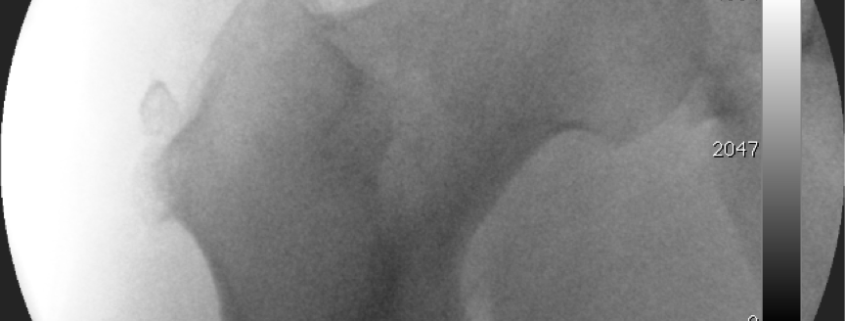Hip Arthroscopy

Overview
Hip arthroscopy is a minimally invasive surgical procedure, aimed at diagnosing and treating a range of conditions affecting the hip joint. This approach uses small incisions and special instruments to access the joint without the need for large cuts or extensive soft tissue disruption. The prevalence of hip arthroscopy has increased significantly in recent years, particularly among athletic populations, due to its low impact nature and quick recovery times.
Types
Hip arthroscopy is broadly classified into diagnostic and therapeutic procedures. Diagnostic hip arthroscopy is performed to identify the cause of hip pain or dysfunctions, whereas therapeutic hip arthroscopy involves corrective measures including the repair, removal, or replacement of the damaged hip tissues or structures.
Causes
Hip arthroscopy is typically employed to manage conditions such as hip impingement, labral tear, dysplasia, osteoarthritis, synovitis, loose bodies in the hip joint, and hip joint infections. Risk factors for these conditions encompass aging, strenuous physical activity, previous hip injury, developmental hip abnormalities and systemic diseases like rheumatoid arthritis.
Symptoms
Symptoms that may necessitate hip arthroscopy include chronic hip pain, mobility issues such as inability to move the hip through its full range of motion, clicking or catching sensation in the hip, and swelling or stiffness in the hip joint. Less common symptoms might also include numbness or tingling in the affected leg.
Diagnosis
Your doctor will evaluate your symptoms, medical history, and perform a physical examination as a first step. Imaging studies such as X-ray, MRI or CT scans may be used to visualize the hip joint in detail. A diagnostic hip arthroscopy may also be performed if necessary.
Treatment Options
The initial approach to managing the conditions treatable with hip arthroscopy involves conservative measures, such as physiotherapy, anti-inflammatory medications, pain management, and lifestyle modifications. If these measures fail to alleviate symptoms, hip arthroscopy may be recommended. This involves using an arthroscope (a slender tube with a lighted end) through small incisions to view, diagnose, and treat hip abnormalities.
Living With Hip Arthroscopy
Postoperative care after hip arthroscopy may involve rest, physical therapy, use of crutches, pain and inflammation management. Rehabilitation exercises will help in regaining strength and flexibility. Healthy diet and maintaining optimal weight will further support recovery and overall joint health. Emotional support from friends, family or support groups can be beneficial during the recovery phase.
When to Seek Help
While some discomfort after hip arthroscopy is normal, you should seek immediate medical attention if you experience severe pain, excessive bleeding or drainage from the surgical site, uncontrolled nausea or vomiting, difficulty breathing, chest pain, numbness or tingling in the affected leg, or fever above 101 degrees Fahrenheit, as these could be signs of complications.
Remember, your healthcare team is there to help and support you through this journey. Never hesitate to ask questions or share your concerns about hip arthroscopy. The more informed you are about your condition and treatment, the more effectively you can participate in your care.
